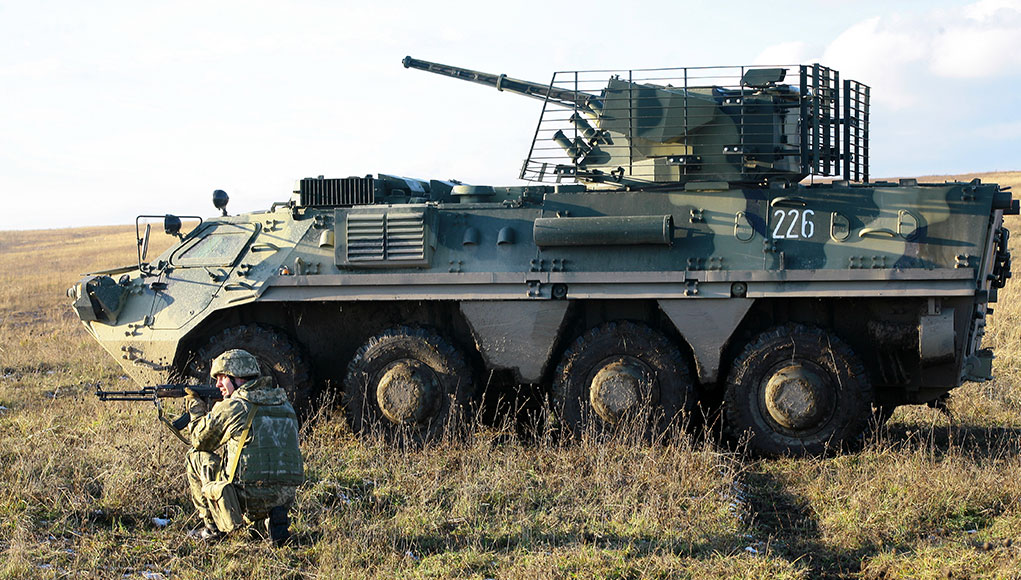How does the rapid fielding of modern and mature 8×8 IFVs reduce the risk and enhance the combat agility of NATO’s Eastern front? The combat experience gathered in the Ukraine War reflects the need for agile land combat systems that effectively integrate maneuverability and firepower and rely on logistical support from domestic or neighboring allied countries.
IFVs are Rising to Face New Threats
While forward-deployed heavy armor – main battle tanks and heavily armored infantry fighting vehicles (AIFV) – provide the highest deterrence, the need to cover the long border requires more agile and deployable forces that often consist of wheeled combat vehicles, able to move quickly over long distances, and deploy adequate firepower and infantry troops, anti-tank equipment, self-propelled mortars, and artillery wherever they are most needed. 8×8 combat vehicles are deemed the most suitable for such missions and are widely available to many NATO countries. Eastern European armies have relied chiefly on Russian 8×8 vehicles such as the BTR-60, 80, and OT-64. Western APCs – Pandur II, AMV, and Piranha- replaced many of these legacy armored vehicles.
However, the Western vehicles were configured as Armored Personnel Carriers (APCs), just like their Russian counterparts. Only recently, NATO embraced the 8x8s as an IFV, equipped with a 30mm automatic cannon, anti-tank guided missiles, sophisticated situational awareness, and target acquisition systems.
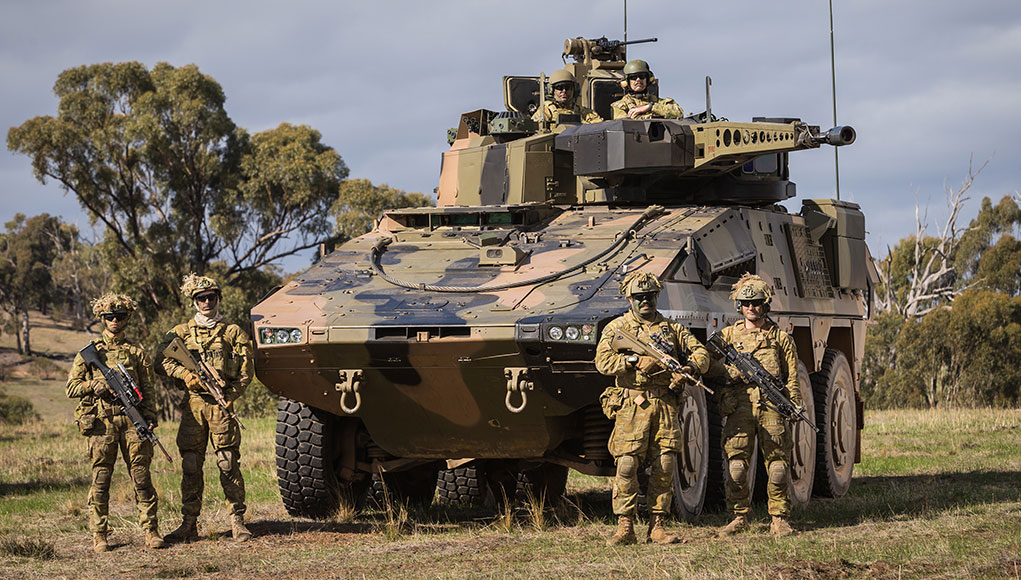
Unlike other AFV programs, this concept did not begin with the world’s leading armies but with small nations looking for affordable alternatives to heavy armored formations. Poland was the first to field such a system, mounting the Italian HitFist 30P turret from Leonardo as a standard weapon on the AMV Rosomak. Brazil came second, adopting the new Israeli concept of mounting a medium caliber gun on an overhead remotely controlled weapon station from Elbit Systems.
For several years NATO has been increasing its military presence in the eastern part of the Alliance as a direct result of the Russian onslaught on Ukraine in 2014. In 2016 Allied Heads of State and Government agreed to establish NATO’s forward presence in the northeast and southeast of the Alliance in response to the increased instability and insecurity along NATO’s periphery. This act was followed by positioning four multinational battalion-size battlegroups in Estonia, Latvia, Lithuania, and Poland providing some of the forces, led by the United Kingdom, Canada, Germany, and the United States providing armored units and resources. Additional battlegroups were established following Russia’s full-scale invasion of Ukraine in February 2022, positioning four more multinational battlegroups in Bulgaria, Hungary, Romania, and Slovakia, effectively doubling the number of troops on the ground and demonstrating the Alliance’s determination to respond to any aggression and protect the Alliance’s eastern flank – from the Baltic Sea in the north to the Black Sea in the south.
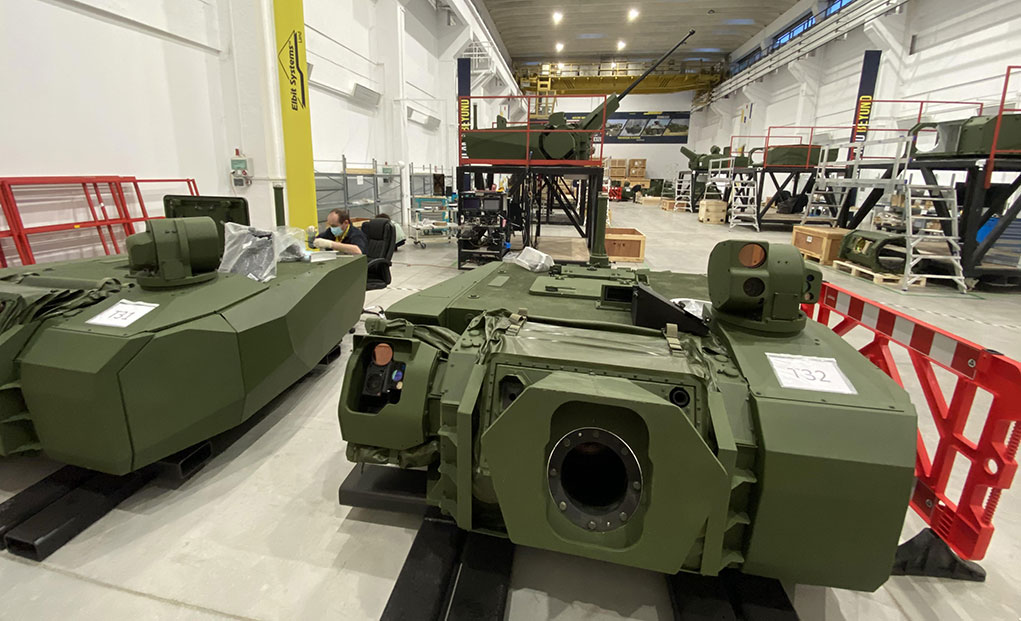
The High Cost of Integration
Unlike manned turrets that take much of the internal space for the weapon system, unmanned turrets are installed on top, clearing much of the room for the crew and infantry squad. However, without a crew in the turret, all operations must be performed remotely. This process requires extensive electronic integration of mechanical and electrical systems and extensive support to keep those automated systems running smoothly and meeting user expectations. Having those capabilities at close geographic proximity is important for rapid fielding and high readiness of such advanced combat systems.
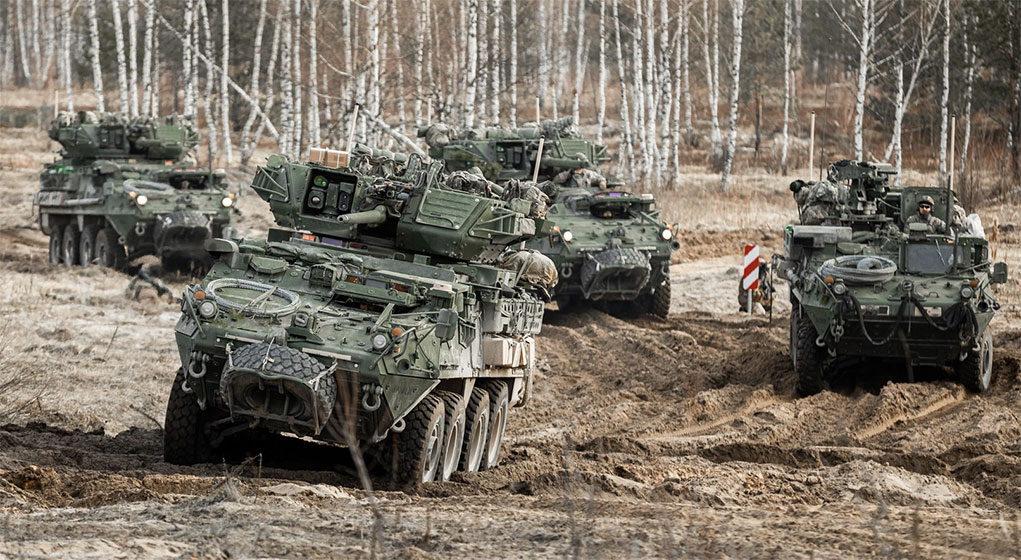
The complex integration posed significant challenges to countries that opted to move this way. Since most vehicle manufacturers do not provide turrets, users often choose the weapon system and match it with the platform. A typical integration is complex and could take two to four years. The U.S. Army has also encountered problems with its Stryker 30mm Infantry Carrier Vehicle – Dragoon. In 2015, the U.S. Army chose the MCT-30 remotely operated turret from the Norwegian company Kongsberg to be mounted on flat-hull Strykers to increase the lethality of the Stryker Brigade in Europe. These systems have been fielded and operated with the US Army as part of the European Deterrence Initiative since 2018. However, after supplying two brigades, the Army switched to a more protected platform, the Stryker DVHA1, which required repeated integration of the medium caliber weapon system. This program was led by Oshkosh and used a derivative of the Samson 30 turret from Rafael optimized for the Army’s requirements. Although the US required local production of the turrets to meet the rapid delivery schedules, manufacturing of turrets is currently undergoing in Israel. The integration was smooth and was completed within a year. Deliveries of the systems are now in the second year of production, under the $942 million program of record expected to complete delivery within four years.
Lithuania also pursued the Samson turret from Rafael for its Vilkas – the 8×8 Boxers. Lithuania was offered a German turret for the Boxer but preferred to mount the Samson MKII turret, which was more affordable. The integration of German and Israeli systems encountered significant challenges, particularly under the COVID-19 restrictions that prevented the flow of equipment and personnel, lengthy cycles for problem-solving, experimentation, testing, and repair that delayed deliveries by two years. The issues are reportedly resolved by now, but according to Lithuanian press reports, some problems still linger today and affect the operational capabilities of the Vilkas. Nevertheless, the integration challenges encountered in the process have delayed the delivery of the Boxers Lithuania planned to acquire.
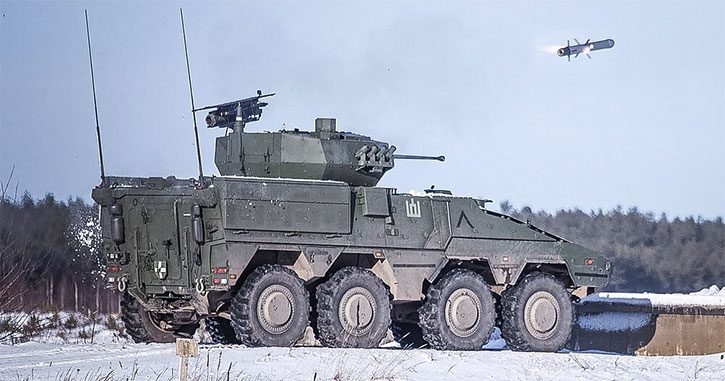
Bridging the Gap with Localized, Mature Solutions
Bucharest opted for similar weapons but selected different platforms and turrets – opting for the locally produced General Dynamics Land Systems Europe Piranha V with Elbit Systems’ UT30MK2 unmanned turret, also built in the country, over the German Boxer and its Lance turret. Rafael’s Spike guided missiles are also used on the Romanian APC. Croatia has also fielded a similar turret as part of its Patria 8×8 modernization program. The company also completed a similar integration of UT30MK2 on the Austrian Pandur II for various customers.
The paths followed by Romania and Lithuania reflect different acquisition approaches to other acquisitions in Eastern Europe. Traditionally, European countries favored the local assembly or full manufacturing of their vehicles, but, for many, the manufacturing of turrets required many specializations that were not readily available in most countries. Furthermore, integrating different platforms, turrets, missile systems, and electronics posed additional risks and delays, particularly for those investing in the independent local development of vehicles or turrets. For example, Poland, like Romania, favored the local production of an upgraded Rosomak equipped with an unmanned turret of a local design. But, unlike the tried and tested Romanian design backed by experienced teams from the original vehicle and turret manufacturers, Poland is currently integrating a new turret into a new vehicle – a significant challenge. Slovakia is also taking the uncharted path, matching the Patria AMV with a locally manufactured turret developed by EVPU. Bulgaria also planned to buy 150 such vehicles but has canceled their plan due to high costs.
Another country encountering a prolonged complex acquisition of IFV is Slovenia. In 2008 the country was one of the first European countries to select remotely controlled medium caliber weapons from Elbit Systems for their 8×8 IFV; the program stalled due to legal allegations concerning the vehicle manufacturer Patria. In 2018 Slovenia selected the German Boxer in the same configuration developed for Lithuania, but this plan was canceled in 2022. This year Slovenia is initiating this acquisition, this time considering a more considerable buy on a Government to Government (G2G) basis. Slovenia will likely view only European suppliers to ensure timely supply and continuous support even in times of crisis. Italy, Poland, Romania, Austria, and Switzerland already supply modern IFVs for domestic use; some offer local assembly for other European countries. The US Stryker could be considered, but other options are more feasible given that US production lines are full for several years for platforms and turrets. Turret manufacturers haven’t been mentioned yet. However, given the requirement for rapid delivery and local support from European countries, having fully integrated platform and weapon systems and active manufacturing and support, Romania is considered a good candidate, alongside other European manufacturers, such as the Norwegian Kongsberg and Italian Leonardo.
Fielding multi-role IFVs has been challenging, but these combat systems’ value to the modern battlespace is clear, but the IFV isn’t made as a single system. It combines a chassis, propulsion, and armor systems, an unmanned turret, missile systems, and vetronics delivered by different manufacturers. The integration and assembly represent a complex task. Marrying proven systems and platforms delivered by trusted sources from active production lines is paramount in reducing risks and accelerating delivery and fielding.


